calsfoundation@cals.org
Traskwood (Saline County)
| Latitude and Longitude: | 34°26’57″N 092°39’15″W |
| Elevation: | 322 feet |
| Area: | 5.63 square miles (2020 Census) |
| Population: | 495 (2020 Census) |
| Incorporation Date: | November 20, 1900 |
Historical Population as per the U.S. Census:
|
1810 |
1820 |
1830 |
1840 |
1850 |
1860 |
1870 |
1880 |
1890 |
1900 |
|
– |
– |
– |
– |
– |
– |
– |
– |
– |
– |
|
1910 |
1920 |
1930 |
1940 |
1950 |
1960 |
1970 |
1980 |
1990 |
2000 |
|
228 |
256 |
225 |
226 |
199 |
205 |
358 |
459 |
488 |
548 |
|
2010 |
2020 |
|
|
|
|
|
|
|
|
|
518 |
495 |
|
|
|
|
|
|
|
|
Traskwood is the southernmost community in Saline County. Located on State Highway 229 (and on the Union Pacific Railroad tracks) about halfway between Benton (Saline County) and Malvern (Hot Spring County), Traskwood is several miles from Interstate 30 and therefore does not have the commercial enterprises of its larger neighbors.
Although the Saline River has been a means of transportation since prehistoric times, the land of southern Saline County remained unclaimed until after the Civil War. Among the first white settlers were Henry Taylor Collatt (1875), Joseph Reed (1875), Henry James (1877), John Tobin (1882), and John Benton (1883). By this time, the St. Louis, Iron Mountain and Southern Railway had already completed a railroad through the region, establishing a depot named Traskwood, reportedly as a combination of the last names of two railroad employees (Trask and Wood). A post office of that name was established in 1874, and Collatt opened a store in front of his family home. The 1880 census recorded many railroad workers living in the area, and also many sawmill employees.
Traskwood was incorporated as a town in late 1900. By then, it already had several stores—one with a dancehall on the second floor—a school, and a resident doctor. The school, a one-room structure built on the site of a former sawmill, burned down early in the century and was replaced by a two-room schoolhouse. A special school district was established for Traskwood by the Arkansas General Assembly in 1911. Around 1920, Traskwood had a railroad depot, four general stores, a hotel, a saloon, a lumberyard, a blacksmith shop, a cotton gin, a grist mill, a post office, a Methodist church, and a Baptist church.
The Iron Mountain Railroad was acquired by the Missouri Pacific in 1917; the Union Pacific acquired the Missouri Pacific in 1982. As railroad traffic was increasingly replaced by highway traffic and by air travel, the significance of communities such as Traskwood diminished. At the same time, however, some residents of large urban areas such as Little Rock (Pulaski County) were seeking to relocate to smaller “bedroom” communities that were still reasonably close to the city. As such a community, Traskwood gained population during the latter part of the twentieth century. The town reincorporated as a second-class city in 1968.
The children of Traskwood attend the schools of the Glen Rose School District. Traskwood still has a Landmark Missionary Baptist church; however, the city in 2013 had no stores or restaurants. The population of Traskwood in the 2010 census was 518, almost entirely white residents.
Author Francis Irby Gwaltney was born in Traskwood in 1921. His father died before Gwaltney’s second birthday, and the family then moved to western Arkansas.
For additional information:
Millwood, Lyn. “Traskwood.” The Heritage 32 (2005): 75–76.
Steven Teske
Butler Center for Arkansas Studies
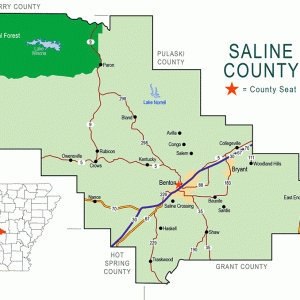 Saline County Map
Saline County Map  Traskwood Church
Traskwood Church 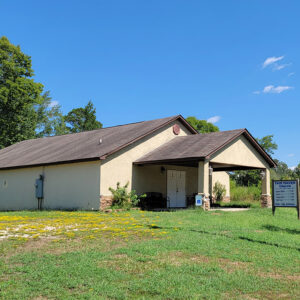 Traskwood Church
Traskwood Church 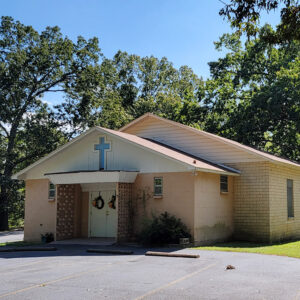 Traskwood Church
Traskwood Church 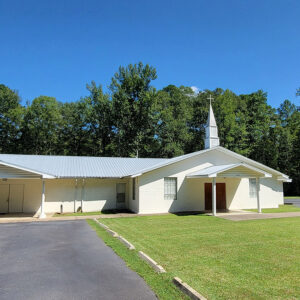 Traskwood Church
Traskwood Church 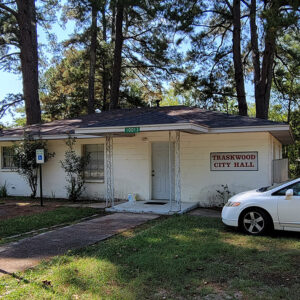 Traskwood City Hall
Traskwood City Hall 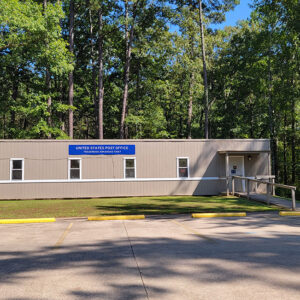 Traskwood Post Office
Traskwood Post Office  Traskwood Street Scene
Traskwood Street Scene 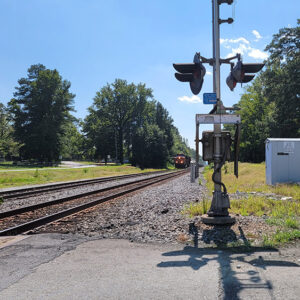 Traskwood Tracks
Traskwood Tracks 




Comments
No comments on this entry yet.